Emergence of and Learning Processes in a Civic Group Resuming Prescribed Burning in Norway
Abstract
1. Introduction
- How did the particular prescribed burner civic group acquire necessary competence (and confidence) to perform burning sessions?
- Which factors enhance and which factors impede the practice of prescribed burning as a way of heathland management?
- Which learning processes were prevalent in resuming the activity, and how can they inform future standardized courses?
2. Northern Atlantic Heathlands and Their Legal Protection Status in Norway
2.1. Succession of Unmanaged Norwegian Heathlands
2.2. Legal Protection of Heathlands
- have a development or condition that makes the habitat threatened;
- the nature type is important for one or more priority species;
- the habitat has a significant proportion of its prevalence in Norway, or
- there are international obligations related to the nature type
2.3. Notification Process Required by the Fire Brigade and Liability Issues
2.4. Funding Schemes in Norway as a Result of Legal Protection of the Heathlands
3. Theory
3.1. Civic Groups
3.2. Adult Learning Styles/Theoretical Approach to the Learning Processes in Adult Civic Groups
4. Research Methods
- motivation to commit themselves to the activity;
- special triggers that affected the motivation;
- getting started;
- special challenges; or
- perceived successes.
- civic group winter meetings where plans for burning sessions in the spring were developed (2015–2019);
- evaluation sessions (2016–2019), also after a prescribed burn that developed into a wildfire,
- participation at open annual seminars arranged by the civic group in cooperation with the WNUAS, 2016–2019; and
- participation in a burning session (February 2020).
5. Results and Discussion
5.1. The Prescribed Burner Group Participants and Organization
5.2. Description of and Main Findings from the Document Study
5.3. Description of and Main Findings from Winter Meetings
5.4. Description of and Main Findings from the Hetland Wildfire Evaluation Session
5.5. Description of and Main Findings from the Annual Seminars 2016–2019
5.6. Description of and Main Findings from a Burning Session
5.7. Main Findings from the Interviews
- “A landowner I know, he owns a property on the Toftøy island, asked me if I could burn it for him. It had not been burned for about 50 years. I answered I probably could, if my students at the agricultural school joined.” To the question “How did you dare to perform a burn, having never burned before, and, in addition, have a class of teenagers joining?” He answered that he was a part-time firefighter and had joined responses involving wildfires. He divided the farmer’s property into eight sectors and has since then burned one sector each year as an exercise with the agricultural class. He considered it was useful for his students. “Farmers are often involved in responses when wildfires occur. If they have previous experience with a controlled fire, it may be an advantage for them in the future.” The 2007 prescribed burn at Toftøy island came out of control and resulted in a larger area than planned being burned. It was also burning during the night, i.e., violating the prescribed burning permission. The lessons learned from the 2007 Toftøy island wildfire are usually presented at seminars and courses for learning purposes.
- When I was a 10 year old child, a wildfire on Boknafjellet burned for one week. No one attempted to extinguish it. It was in 1962. They accepted wildfires those days. I joined a prescribed burn on Toftøy organized by Interviewee 1 (the one where the fire got out of control) so the fire brigade came. I was surprised by the way they (the fire brigades) worked. They moved between large fire flame front bays (which would extinguish anyway when these flames converged), and it can be lethal to be caught in between. I had just come back to the district to take over my parents’ farm, after many years of career in the industry. I had been part of the industrial (fire) safety organization, as well as being a firefighter during the military service. So, I tried to calm everyone down, and let them drink water. Later on, I joined a seminar in the project “See Haugalandet”, where prescribed burning was mentioned as a recommended way to get back the original landscape view. That inspired me to try prescribed burning at my farm. I now have several Old Norse Sheep, incredible animals. The fire brigade has a different competence level and different attitude now, after years with prescribed burning. Sometimes firefighters join in, as individuals. That is great.
- I have always been concerned about sustainability and want to run my small farm in a sustainable way, as far as possible. Outdoor grazing sheep use a resource that otherwise is unused, so it is more sustainable to let them graze on the heathland than importing concentrated animal food. I also invite youth to the farm. This involves youth with special needs, or disadvantaged youth, in some way. They then experience this way of living with the nature. I joined the burn in Toftøy, i.e., the one that got out of control. It was my first time on a prescribed burn. I had previously been a part-time firefighter, so it was not scary for me. I have burned many times since then. I have also had the lead for several prescribed burns. Well, the most recent one was the one that developed into the Hetland fire, so, I don’t “talk so loudly” in meetings after that incident.
- I am a part-time firefighter in Sveio municipality. There, it is the fire brigade that conducts the prescribed burns, as a yearly exercise. As far as I know, it is the only place in Norway the fire brigade is doing that. The local farmers/landowners have to apply to the County for the funding. Then they transfer the necessary amount to the fire brigade to cover the cost for the exercise. This is a part-time fire brigade, so there is a cost for each person who participates. I have a small farm as well, and lately also I have started with some sheep. Not for sale, only for the family. I always join the fire brigade heather burning session, it is really fun! There was a wildfire in 2014, a few days after the huge fires in Flatanger and Frøya, and it was as dry here. But the fire hit an area that we had recently burned in a practice session, so it was quite easy to extinguish it at this recently managed area. That is why Sveio didn’t become as “famous” as the other places.
- I was six years old when I got my first sheep, and I have constantly had sheep since. That makes it nearly a lifetime. Our farm was turned into a residential area in year 2000, and the common outback was expropriated by the municipality. But the Kringsjå hut is here, so I started my own company (Kringsjå Samdrift) and the sheep could continue grazing on the same outback as previously. It is good for the landscape, and visitors love them. I burned heather first on a hill right above the hut together with a friend of mine who is a firefighter. That was in 2003. After that, I have joined others of the (prescribed burner) group several times, also during the Hetland fire. There, I had to escape to a land finger in a lake to avoid the flames. It spread really fast in cured grass. The fire brigade should have had some means to come to such areas by boat. And be able to fight fire without water. With some help, let’s say half an hour or even one hour after we called for help, much could have been achieved. As the situation developed, it was the fire that reached the fire brigade (by reaching an area with roads), not opposite.
- I work for the local agricultural advisory office. This agricultural advisory office applied for project funding for equipment as early as in 2007. The office then had brooms and ignition equipment, which the farmers could borrow. It was Interviewee 2 who came in and created a shared mindset… that they could collaborate on this. Then even those who felt unsafe could start burning on their own land. He also arranged meetings to share experiences, where the different teams/farmers told each other how their burning had been. He is among the persons who are able to take responsibility and organize. He runs a farm at Høie. He got together with neighbors, and they burned as a team, helping each other. The prescribed burner group have their own equipment now, and protective gear. Key people must take an interest in the problem and address it. Presentations about prescribed burning have also been held at the meetings of the Old Norse Sheep Owner Association, an important co-player. And the annual seminars at the University are important. A good number of firefighters, students and farmers gather there.
5.8. Longitudinal Learning Processes in the Civic Group
5.9. Suggestions for a Future Prescribed Burning Course Curriculumn
6. Conclusions
Funding
Acknowledgments
Conflicts of Interest
References
- Kaland, P.E. The origin and management of Norwegian coastal heaths as reflected by pollen analysis. In Anthropogenic Indicators in Pollen Diagrams; Behre, K.E., Ed.; Balkema: Rotterdam, The Netherlands, 1986; pp. 19–36. [Google Scholar] [CrossRef]
- Keeley, J.E. Native American impacts on fire regimes of the California coastal ranges. J. Biogeogr. 2002, 29, 303–320. [Google Scholar] [CrossRef]
- Bowman, D.M.J.S. The impact of Aboriginal landscape burning on the Australian biota. New Phytol. 1998, 140, 385–410. [Google Scholar] [CrossRef]
- Whelan, R.J. The Ecology of Fire; Cambridge Studies in Ecology; Cambridge University Press: New York, NY, USA, 1995; ISBN 978-0-521-32872-2. [Google Scholar]
- Pausas, J.G.; Ribeiro, E. Fire and plant diversity at the global scale. Glob. Ecol. Biogeogr. 2017, 26, 889–897. [Google Scholar] [CrossRef]
- Vannière, B.; Colombaroli, D.; Chapron, E.; Leroux, A.; Tinner, W.; Magny, M. Climate versus human-driven fire regimes in Mediterranean landscapes: The Holocene record of Lago dell’Accesa (Tuscany, Italy). Quat. Sci. Rev. 2008, 27, 1181–1196. [Google Scholar] [CrossRef]
- Lestienne, M.; Hély, C.; Curt, T.; Jouffroy-Bapicot, I.; Vannière, B. Combining the Monthly Drought Code and Paleoecological Data to Assess Holocene Climate Impact on Mediterranean Fire Regime. Fire 2020, 3, 8. [Google Scholar] [CrossRef]
- Leenhouts, B. Assessment of biomass burning in the conterminous United States. Conserv. Ecol. 1998, 2, 1. Available online: http://www.consecol.org/vol2/iss1/art1/ (accessed on 4 January 2020). [CrossRef]
- Stephens, S.L.; Martin, R.E.; Clinton, N.E. Prehistoric fire area and emissions from California’s forests, woodlands, shrublands and grasslands. For. Ecol. Manag. 2007, 251, 205–216. [Google Scholar] [CrossRef]
- Flannigan, M.D.; Stocks, B.J.; Wotton, B.M. Climate change and forest fires. Sci. Total Environ. 2000, 262, 221–229. [Google Scholar] [CrossRef]
- Westerling, A.L.; Hidalgo, H.G.; Cayan, D.R.; Swetnam, T.W. Warming and earlier spring increase western US forest wildfire activity. Science 2006, 313, 940–943. [Google Scholar] [CrossRef]
- Stephens, S.L.; Collins, B.M.; Biber, E.; Fulé, P.Z. U.S. federal fire and forest policy: Emphasizing resilience in dry forests. Ecosphere 2016, 7, 1–19. [Google Scholar] [CrossRef]
- Stephens, S.L.; Kobziar, L.N.; Collins, B.M.; Davis, R.; Fulé, P.Z.; Gaines, W.; Ganey, J.; Guldin, J.M.; Hessburg, P.F.; Hiers, K.; et al. Is fire “for the birds”? How two rare species influence fire management across the US. Front. Ecol. Environ. 2019, 17, 391–399. [Google Scholar] [CrossRef]
- Melvin, M. 2015 National Prescribed Fire Use Survey Report; Technical Report 02-15; Coalition of Prescribed Fire Councils Inc.: Washington, DC, USA, 2015. [Google Scholar]
- Rego, F.M.C.C.; Rodríguez, J.M.M.; Calzada, V.R.V.; Xanthopoulos, G. Forest Fires—Sparking Firesmart Policies in the EU; Publications Office of the European Union: Brussels, Belgium, 2018; p. 53. ISBN 978-92-79-77493-5. [Google Scholar] [CrossRef]
- San-Miguel-Ayanz, J.; Durrant, T.; Boca, R.; Liberta’, G.; Branco, A.; De Rigo, D.; Ferrari, D.; Maianti, P.; Artes Vivancos, T.; Pfeiffer, H.; et al. Forest Fires in Europe, Middle East and North Africa 2018; EUR 29856 EN; Publications Office of the European Union: Brussels, Belgium, 2019; ISBN 978-92-76-11234-1. [Google Scholar] [CrossRef]
- Morgan, S. Europe’s 2019 Wildfires Already Exceed Last Year’s Blazes; EURACTIV. Available online: euractiv.com/section/climate-environment/news/europes-2019-wildfires-already-exceed-last-years-blazes (accessed on 26 March 2019).
- Carreiras, M.; Ferreira, A.J.D.; Valente, S.; Fleskens, L.; Gonzales-Pelayo, O.; Rubio, J.L.; Stoof, C.R.; Coehlo, C.O.A.; Ferreira, C.S.; Ritsema, C.J. Comparative analysis of policies to deal with wildfire risk. Land Degrad. Dev. 2014, 25, 92–103. [Google Scholar] [CrossRef]
- Montiel-Molina, C. Comparative assessment of wildland fire legislation and policies in the EU: Towards a fire framework directive. For. Policy Econ. 2013, 29, 1–6. [Google Scholar] [CrossRef]
- Log, T.; Thuestad, G.; Velle, L.G.; Khattri, S.K.; Kleppe, G. Unmanaged heathland—A fire risk in subzero temperatures? Fire Saf. J. 2017, 90, 62–71. [Google Scholar] [CrossRef]
- DCP. Skogbrannsesongen 2018 (Fire Season 2018); The Norwegian Directorate of Civil Protection: Tønsberg, Norway, 2019; ISBN 978-82-7768-474-1. [Google Scholar]
- Herrington, J.E. Risk perceptions regarding ticjs and Lyme disease: A national survey. Am. J. Prev. Med. 2004, 26, 135–140. [Google Scholar] [CrossRef]
- Ascoli, D.; Bovio, G. Prescribed burning in Italy: Issues, advances and challenges. iForest 2013, 6, 79–89. [Google Scholar] [CrossRef]
- Førland, E.I. Nedbørsnormaler, Normalperiode 1961–1990; 39/93; DNMI: Oslo, Norway, 1993; pp. 1–63. [Google Scholar]
- Gimmingham, C.H. Ecology of Heathlands; Chapman and Hall: London, UK, 1972; p. 266. ISBN 978-1-5041-2639-7. [Google Scholar]
- MacDonald, A. Scottish Natural Heritage; Information and Advisory Note; Number 58; Scottish Natural Heritage: Inverness, UK, 1996. [Google Scholar]
- Comber, A.; Fisher, P.; Wadsworth, R. Land Use and Land Cover Semantics: Principles, Best Practices and Prospects; Ahlqvist, O., Varanka, D., Fritz, S., Janowicz, K., Eds.; CRC Press: Boca Raton, FL, USA; Taylor and Francis Group: New York, NY, USA, 2016; ISBN 978-1-4822-3740-5. [Google Scholar]
- Davies, G.M.; Legg, C.J.; Smith, A.A.; MacDonald, A.J. Rate of spread of fires on Calluna vulgaris-dominated moorlands. J. Appl. Ecol. 2009, 46, 1054–1063. [Google Scholar] [CrossRef]
- Davies, G.M.; Smith, A.A.; MacDonald, A.J.; Bakker, J.D.; Legg, C.J. Fire intensity, fire severity and ecosystem response in heathlands: Factors affecting the regeneration of Calluna vulgaris. J. Appl. Ecol. 2010, 47, 356–365. [Google Scholar] [CrossRef]
- The Hill Farming Act (1946 and 1985). Available online: https://www.legislation.gov.uk/ukpga/Geo6/9-10/73/contents (accessed on 6 July 2019).
- Velle, L.G.; Nilsen, L.S.; Vandvik, V. The age of Calluna stands moderates post-fire regeneration rate and trends in northern Calluna heathlands. Appl. Veg. Sci. 2012, 15, 119–128. [Google Scholar] [CrossRef]
- Vandvik, V.; Heegaard, E.; Aarrestad, P.A.; Måren, I.E. Managing heterogeneity: The importance of grazing and environmental variation on post-fire succession in heathlands. J. Appl. Ecol. 2005, 42, 139–149. [Google Scholar] [CrossRef]
- Norwegian Institute of Bioeconomy Research (NIBIO). Available online: www.nibio.no/tema/mat/husdyrgenetiske-ressurser/bevaringsverdige-husdyrraser/sau/gammelnorsk-sau (accessed on 20 January 2020).
- European Commission. European Council Directive 92/43/EEC, of 21 May 1992; European Commission: Brussels, Belgium, 1992. [Google Scholar]
- MCE Ministry of Climate and Environment. Act on the Management of Nature’s Diversity, (Nature Diversity Act), LOV-2009-06-19-100. 2009. Available online: https://lovdata.no/dokument/NL/lov/2009-06-19-100/ (accessed on 14 July 2020).
- The Norwegian Nature Diversity Act (MCE 2015) MCE, Ministry of Climate and Environment. Regulation on Selected Habitats According to the Nature Diversity Act, FOR-2015-05-07-464. 2015. Available online: https://lovdata.no/dokument/SF/forskrift/2011-05-13-512/ (accessed on 14 July 2020).
- Brenner, J.; Wade, D. Florida’s revised prescribed fire law: Protection for responsible burners. In Proceedings of the Fire Conference 2000: The First National Congress on Fire Ecology, Prevention and Management, Miscellaneous Publication No. 13, San Diego, CA, USA, 27 November–1 December 2000; Klinger, R.C., Sugihara, N.G., Eds.; Tall Timbers Research Station: Tallahassee, FL, USA, 2003; pp. 132–136. [Google Scholar]
- Gulbrandsen, T.; Ødegård, G. Voluntary Organizations in a New Era, Challenges and Change Processes, (Frivillige Organizasjoner i En Ny Tid, Utfordringer og Endringsprosesser); Center for Research on Civil Society and Volunteer Sector: Oslo, Norway, 2011; p. 123. ISBN 978-82-7763-359-6. [Google Scholar]
- Arnesen, D.; Sivesind, K.H.; Gulbrandsen, T. Fra Medlemsbaserte Organisasjoner til Koordinert Frivillighet? Det Norske Organisasjonssamfunnet fra 1980 til 2013 (From Member-Based Organizations to Coordinated Volunteerism? The Norwegian Organizational Society from 1980 to 2013); Center for Research on Civil Society and Volunteer Sector: Oslo, Norway, 2016; p. 106. ISBN 978-82-7763-517-0. [Google Scholar]
- Arnesen, D.; Sivesind, K.H. Organisasjonslandskap i Endring 2009–2019, fra Ideololgisk Samfunnsendring til Individuell Utfoldelse? (Organizational Landscape in Change 2009–2019, from Ideological Change in Society to Individual Expression?); Institutt for samfunnsforskning: Oslo, Norway, 2020; p. 108. ISBN 978-82-7763-517-0. [Google Scholar]
- Enjolras, B.; Strømsnes, K. Scandinavian Civil Society and Social Transformations: The Case of Norway—Nonprofit and Civil Society Studies; Dekker, P., Benjamin, L., Enjolras, B., Strømsnes, K., Eds.; Springer International Publishing: Cham, Switzerland, 2018; ISBN 9783319772639. [Google Scholar] [CrossRef]
- Wenger, E. Communities of Practice, Learning, Meaning and Identity; Cambridge University Press: Cambridge, UK, 1998; p. 318. ISBN 9780521663632. [Google Scholar]
- Youniss, J.; McLellan, J.A.; Yates, M. What we know about generating civic identity. Am. Behav. Scient. 1997, 40, 620–631. [Google Scholar] [CrossRef]
- Clary, E.G.; Snyder, M.; Ridge, R. Volunteers’ Motivations: A Functional Strategy for the Recruitment, Placement and Retention of Volunteers. Nonprofit Manag. Leadersh. 1992, 2, 233–350. [Google Scholar] [CrossRef]
- Wollebæk, D.; Sætrang, S.; Fladmoe, A. Betingelser for Frivillig Innsats. Motivasjon og Kontekst. (Conditions for Voluntary Effort, Motivation and Context); Rapport 1/2015; Senter for Forskning på Sivilsamfunn og Frivillig Sector: Oslo/Bergen, Norway, 2015; p. 183. ISBN 978-82-7763-468-5. [Google Scholar]
- Tough, A. The Adult’s Learning Projects. A Fresh Approach to Theory and Practice in Adult Learning, 2nd ed.; The Ontario Institute for Studies in Education: Toronto, ON, Canada, 1973; ISBN 0-7744-0059-5. [Google Scholar]
- Kolb, D.A. Experiential Learning: Experience as a Source of Learning and Development; Prentice Hall: Englewood Cliffs, NJ, USA, 1984; ISBN 0133892409. [Google Scholar]
- Piaget, J. The Principes of Genetic Epistemology; Routledge & Kegan Paul: London, UK, 1972/1997; ISBN 9781136221088. [Google Scholar]
- Lave, J.; Wenger, E. Situated Learning: Legitimate Peripheral Participation; Cambridge University Press: Cambridge, UK, 1991; ISBN 978-0521423748. [Google Scholar]
- Sfard, A. On two metaphors for learning and the dangers of choosing just one. Edu. Res. 1998, 27, 4–13. [Google Scholar] [CrossRef]
- Gillham, B. Research Interviews, the Range of Techniques. A Practical Guide; McGraw-Hill Education: London, UK, 2005; ISBN 9780335215867. [Google Scholar]
- Kvale, S. Interviews. An Introduction to Qualitative Research Interviewing, 2nd ed.; Sage Publications: Thousand Oaks, CA, USA, 2004; ISBN 9780803958203. [Google Scholar]
- Blevins, M. Participant Observation. In The SAGE Encyclopedia of Communication Research Methods; Allen, M., Ed.; SAGE Publications, Inc.: Thousand Oaks, CA, USA, 2018; ISBN 9781483381411. [Google Scholar] [CrossRef]
- Fangen, K. Participant Observation (Deltagende Observasjon), 2nd ed.; Fagbokforlaget: Bergen, Norway, 2010; ISBN 9788245010015. (In Norwegian) [Google Scholar]
- Wolcott, H.F. Ethnography: A Way of Seeing, 2nd ed.; Altamira Press: Lanham, MD, USA, 2008; ISBN 978-0759111691. [Google Scholar]
- Ruud, T. See Haugalandet, Final Report; Haugaland Landbruksrådgjeving: Ølen, Norway, 2012. [Google Scholar]
- Håkonsen, S. “Do you dare join me up to look at the mountain?” Haugesunds Avis, March 14th, 2914, Haugesund Norway. Available online: https://www.h-avis.no/meninger/leserbrev/tor-du-dere-bli-med-opp-og-se-i-fjellet/s/2-2.921-1.8335443 (accessed on 14 July 2020).
- Helgesen–Eide, S. En Utfordrende Brann (A Challenging Fire); Haugesunds Avis: Haugesund, Norway. Available online: www.h-avis.no/tysvar/branner/brannvesen/en-utfordrende-brann/s/5-62-795971 (accessed on 13 April 2019).
- Grønner, J.; Helgesen-Eide, S.; Aase, A.; Horvei, T. Haugesunds Avis, April 15th 2019. Haugesund, Norway. Available online: https://www.h-avis.no/nyheter/brannvesen/brannfare/bratebrann-ute-av-kontroll/s/5-62-795893 (accessed on 14 July 2020).
- Skar, M.; Sydnes, M.; Sydnes, A.K. Integrating unorganized volunteers in emergency response management: A case study. Int. J. Emerg. Ser. 2016, 5, 52–65. [Google Scholar] [CrossRef]
- Log, T.; Vandvik, V.; Velle, L.G.; Metallinou, M.-M. Reducing Wooden Structure and Wildland-Urban Interface Fire Disaster Risk through Dynamic Risk Assessment and Management. Appl. Syst. Innov. 2020, 3, 16. [Google Scholar] [CrossRef]
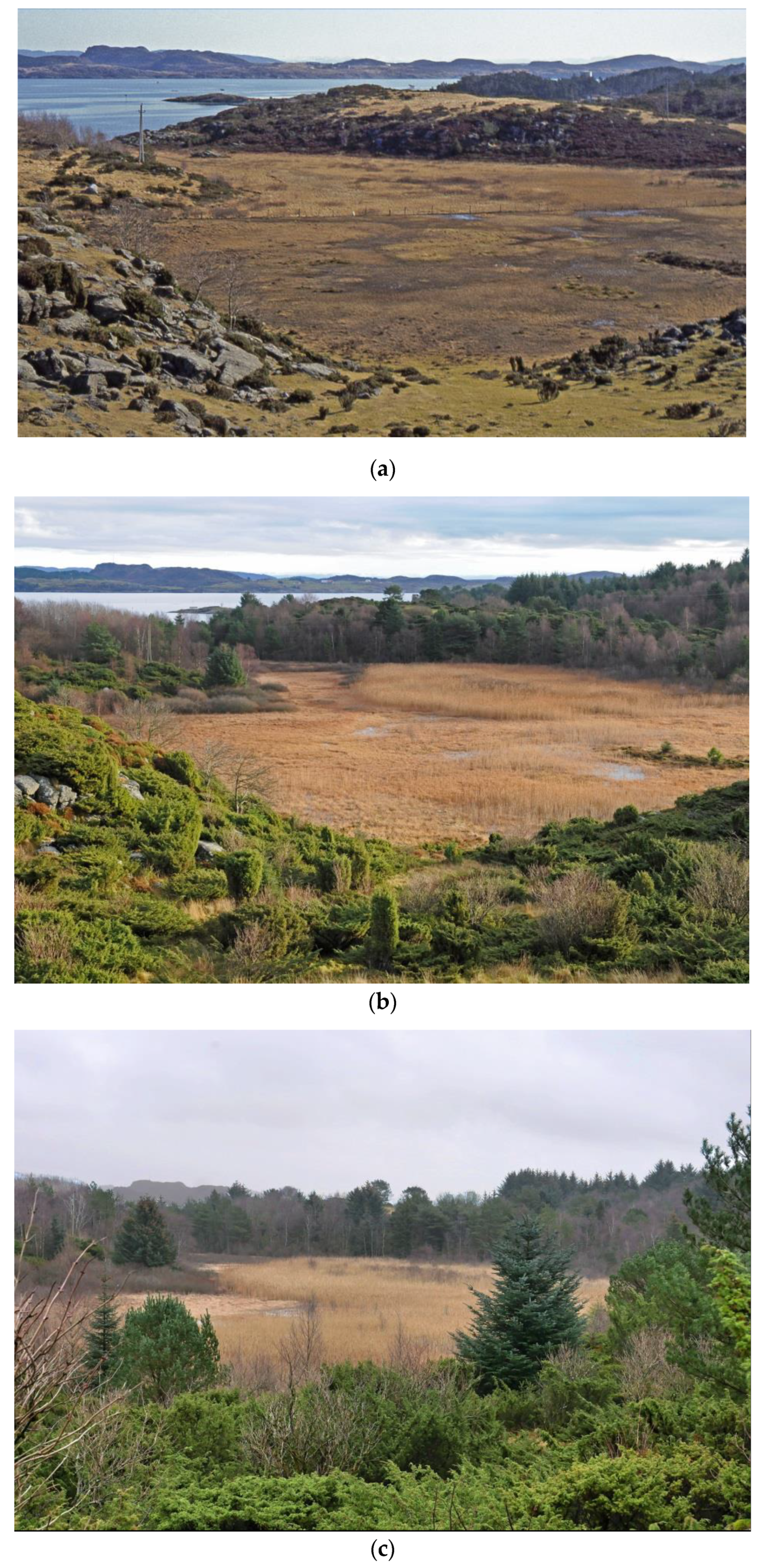
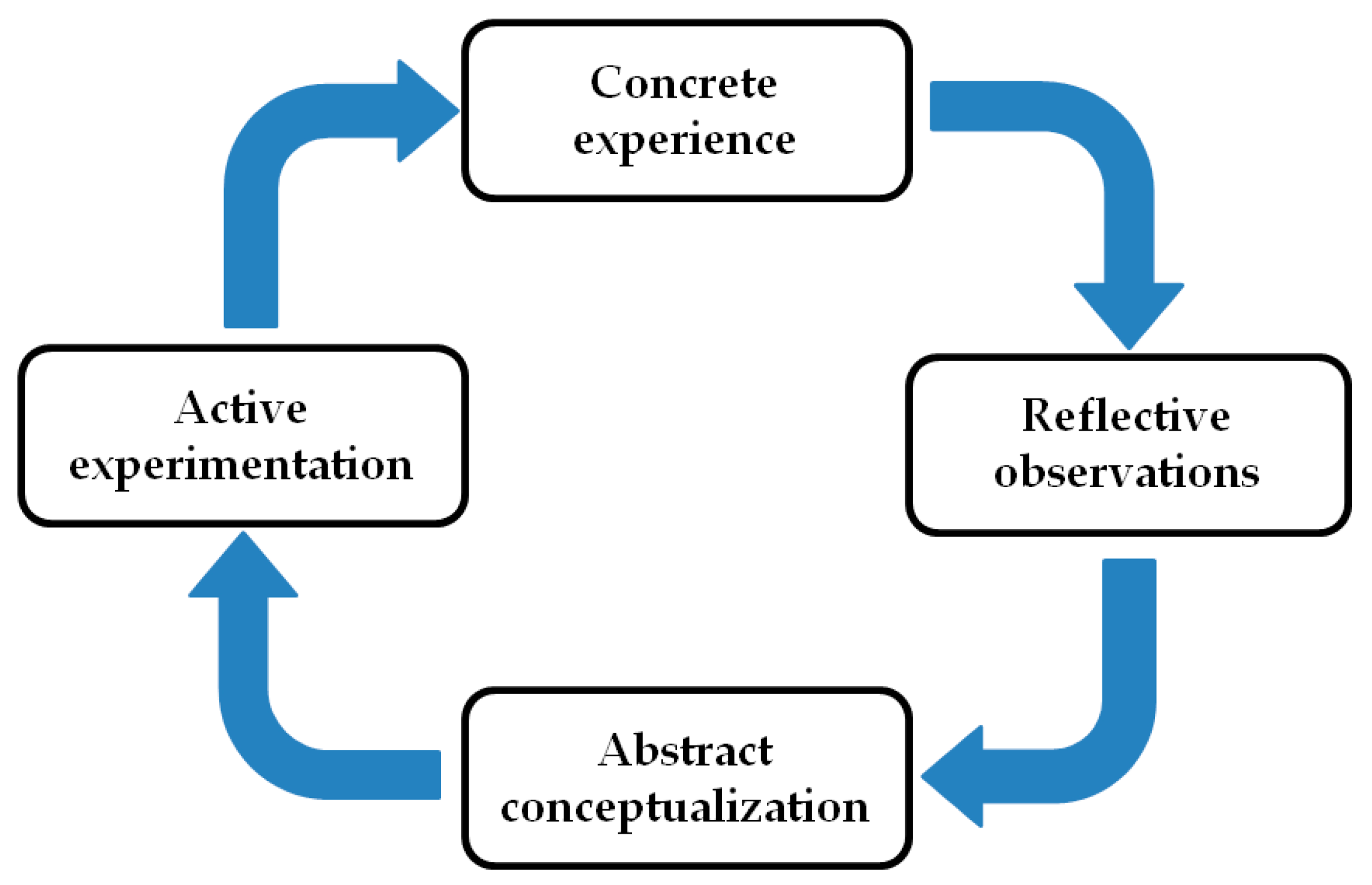
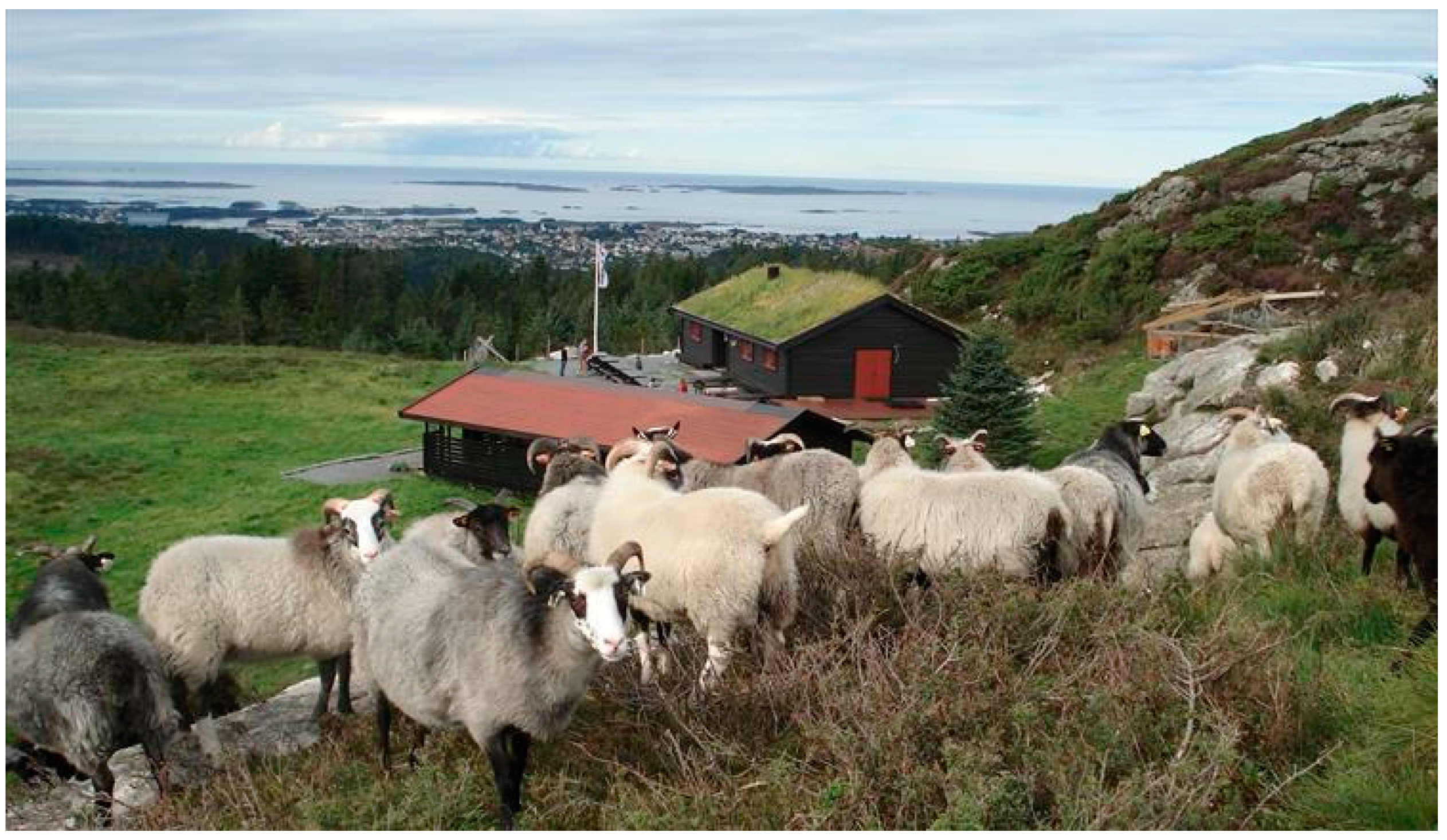
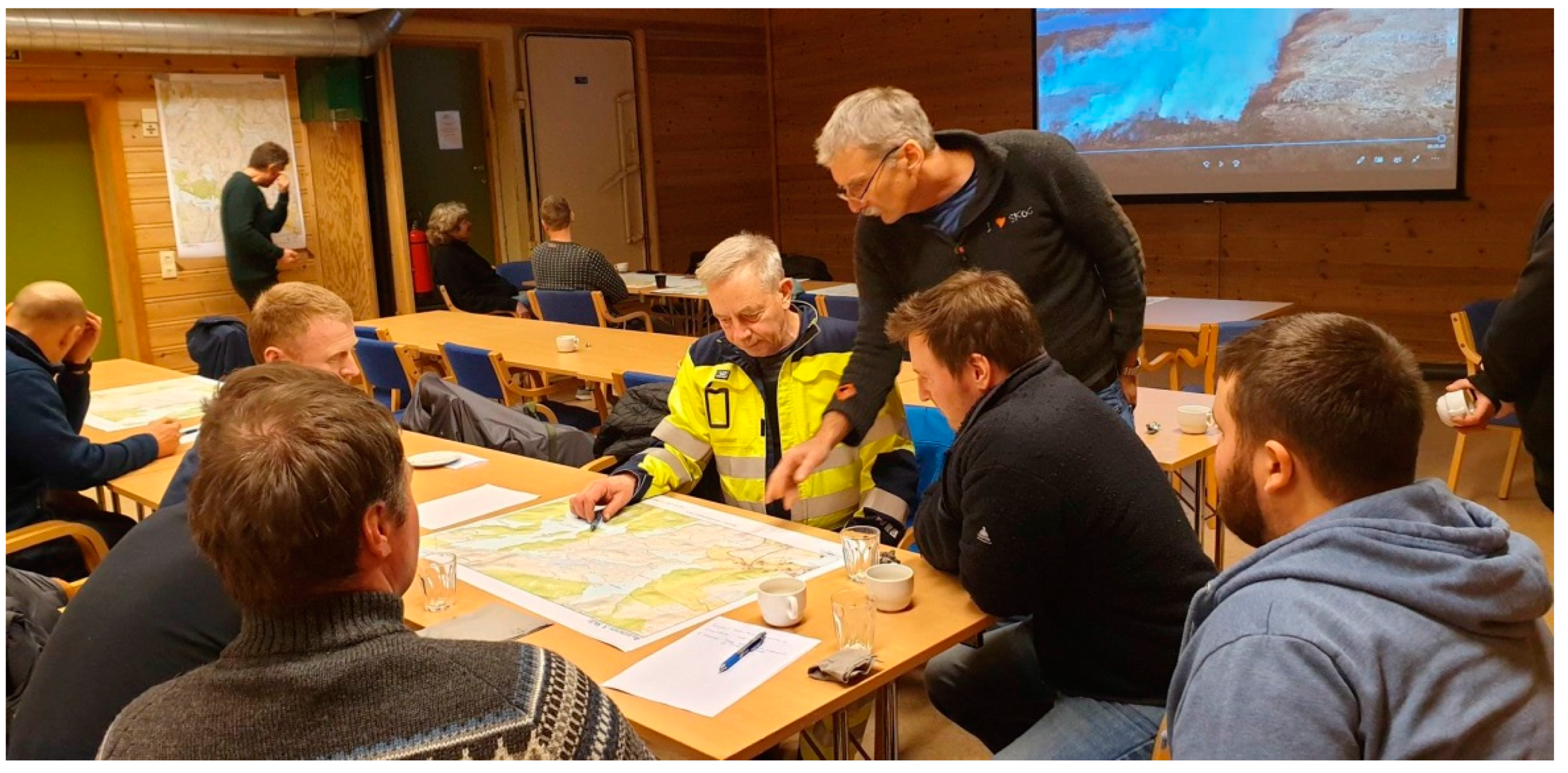
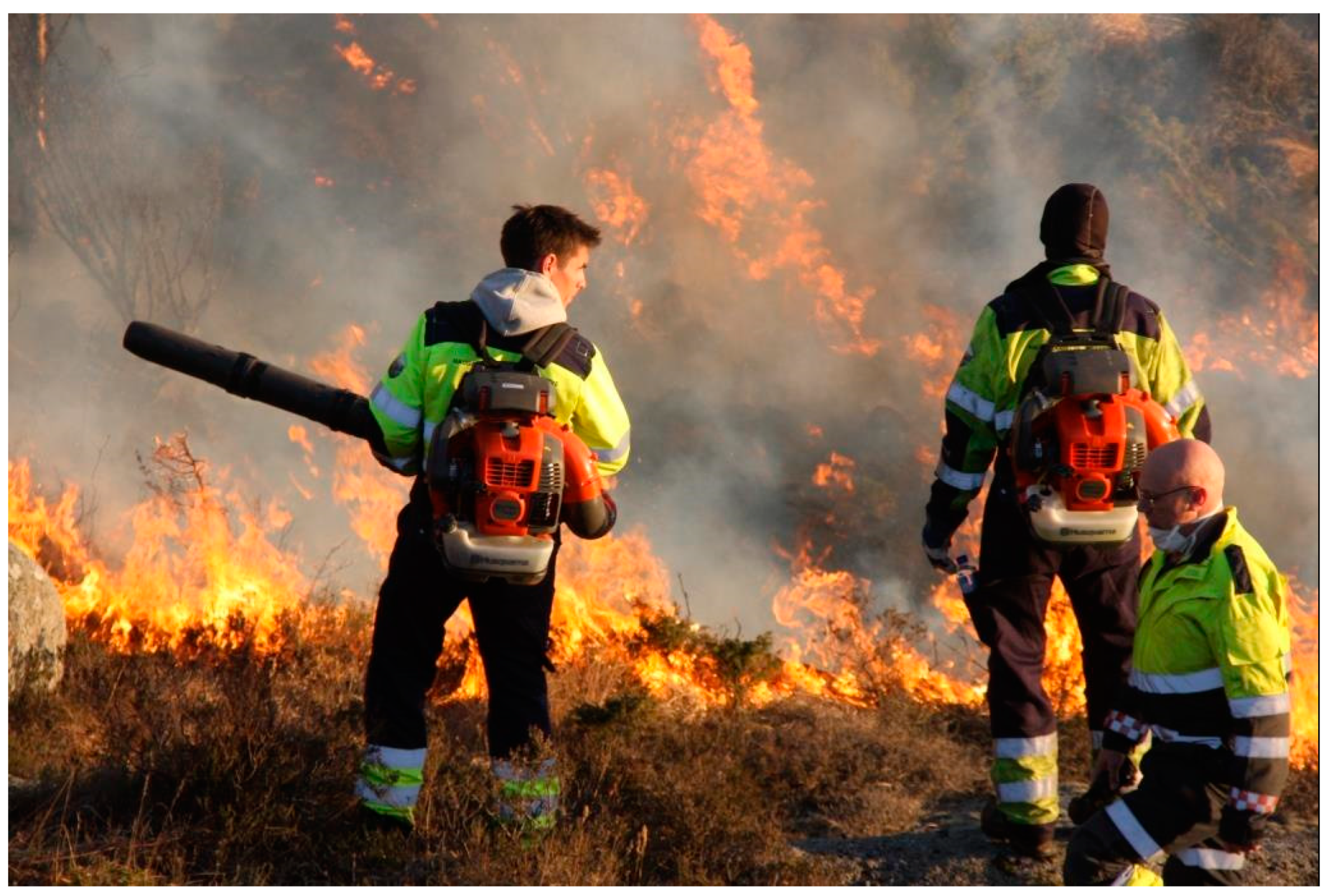
| Interviewee | Affiliation | Source of Initial Motivation | Main Learning or Support Process |
|---|---|---|---|
| 1 | Teacher (agricultural vocational school) | Usefulness to students/future farmers | Self-taught; part-time firefighter |
| 2 | Farmer/sheep owner | Out grazing sheep, culture (ancient practice) | Self-taught; firefighter in the military service and industry |
| 3 | Farmer | Sustainability | Burned with interviewee 1; part-time firefighter |
| 4 | Assistant professor (university) | Reduce wildfire risk | Local fire brigade burning sessions as part-time firefighter |
| 5 | Sheep owner | Sheep and reduce wildfire risk | Self-taught; burned first with a friend who works in the fire brigade |
| 6 | Agricultural advisory office | Ecology/biodiversity/landscape | Introduced detailed maps; organized seminars; supported with applications |
© 2020 by the author. Licensee MDPI, Basel, Switzerland. This article is an open access article distributed under the terms and conditions of the Creative Commons Attribution (CC BY) license (http://creativecommons.org/licenses/by/4.0/).
Share and Cite
Metallinou, M.-M. Emergence of and Learning Processes in a Civic Group Resuming Prescribed Burning in Norway. Sustainability 2020, 12, 5668. https://doi.org/10.3390/su12145668
Metallinou M-M. Emergence of and Learning Processes in a Civic Group Resuming Prescribed Burning in Norway. Sustainability. 2020; 12(14):5668. https://doi.org/10.3390/su12145668
Chicago/Turabian StyleMetallinou, Maria-Monika. 2020. "Emergence of and Learning Processes in a Civic Group Resuming Prescribed Burning in Norway" Sustainability 12, no. 14: 5668. https://doi.org/10.3390/su12145668
APA StyleMetallinou, M.-M. (2020). Emergence of and Learning Processes in a Civic Group Resuming Prescribed Burning in Norway. Sustainability, 12(14), 5668. https://doi.org/10.3390/su12145668




